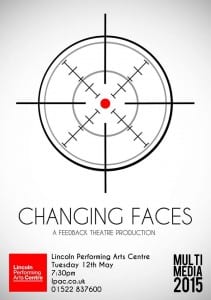Music has the ability to make someone smile, cry, laugh or feel every emotion under the sun. It can take a simple movement to a fully orchestrated artwork. It is a vital part of cinema and TV, and when implemented to theatre can act as an emotional underscore to set a mood for the whole production.
When it comes to this production, a lot of what was wanted was asked for by the directors, which I always followed and achieved exactly what they envisioned but I did have a little bit of creative freedom when it came to how certain things sounded.
When designing the sound and music, it was incredibly important for me to remember, “Sound tells an audience what they cannot see. What is invisible to the audience, but near enough to be heard, becomes the domain of the sound designer… The sound we heard lied to us but still managed to create its own perfectly plausible reality.” (Collins, 2011, 29) This was not only applicable to sound effects like crowd sounds, to make it clear to an audience that there is a crowd just out of eyesight in the given scene, or a clock tick to fill the empty monotonous space, but it also applies to that of music that can create a mood or tension that an audience cannot otherwise pick up on. A monologue said to no sound would sound however the actor portrayed it, may that be angry, happy, sad, but with a low hum underneath, for example, adds a tension or uneasiness that an audience would have otherwise missed out on.
This has been demonstrated with this scene from Jaws, where music can add tension and excitement followed by triumphant victory, not seen without the music.
Works Cited
Collins, J. (2011) Performing Sound/Sounding Space. In: Kendrick, L. and Roesner, D. (eds.) Theatre noise: the sound of performance. London: Newcastle Cambridge Scholars.

